-
Jack Johnson. The American boxing great still awaiting a pardon, on long ago trumped-up charges, that he’s more than due to receive. Obama, for some reason, is dragging his heels– causing many to speculate that it’s because his old foe John McCain is the one strongly behind the effort to bring exoneration to the Black champ’s legacy. Democrats or Republicans– it’s always the same circus, just different clowns.
-
Arthur John “Jack” Johnson was born in Galveston, Texas on March 31, 1878– the first son in a family of six children born to Henry (a former slave) and Tiny Johnson. Jack Johnson grew up poor– dropping put of school in the fifth grade so he could work on the Galveston docks to help support the family. As a teen he began boxing in Negro matches organized to entertain proper white folk. The winner of the match would collect whatever money was thrown in the ring by the appreciative spectators.
Johnson soon rose to the rank of Negro boxing’s heavyweight champion, and was called the “Galveston Giant.” Johnson wanted a shot a Jim Jeffries, the current White heavyweight champ, who refused to fight a black man. In 1910, they finally squared off, with Jeffries coming out of retirement to challenge Johnson– who had become the “unrecognized” heavyweight champion by knocking out Tommy Burns in 1908. Jeffries was hailed as the “Great White Hope” –a rallying cry started by none other than famed author, Jack London. He, and scores of Whites like him, wanted to see the boastful Black boxer beaten in the ring by a White man, in order to erase that “golden smile” from Jack’s face, and restore White America’s pride and position in what was being billed as– “The Fight of the Century.”
-
-
Jack Johnson
-
“If the black man wins, thousands and thousands of his ignorant brothers will misinterpret his victory as justifying claims to much more than mere physical equality with their white neighbours.” –The New York Times
-
Jim Jeffries, who had not fought in six years, was picked apart by the stronger, quicker Johnson. He’d been knocked down twice– his corner (and police) stopped the fight to spare him further embarrassment. When the news hit the wire, race riots broke out across the country– the “Great White Hope” was thwarted. Whites everywhere were shaken to their core– utterly humiliated and seeking retribution. There were reports ranging from jubilant Blacks dancing in the streets, to attempted lynchings by Whites– Twenty-six people were killed and hundreds of others were injured. The Texas Legislature went as far as too ban films of Johnson’s boxing victories in the ring– for fear that they would incite further rioting.
-
-
ca. 1915– Heavyweight Boxing Champion Jack Johnson Posing Outdoors Wearing His Championship Belt –Images by © Underwood &Underwood/CORBIS (rt.), © Bettmann/Corbis (lt.)
-
-
Jack Johnson was an unapologetic, strong and spirited Black man– the likes of which White folk at that time were not prepared for, and certainly not willing to accept. A proud champion who would not bow down– and definitely not be the humble “Uncle Tom” that was expected of him. It infuriated White America that a Black man could not only beat them handily in the ring– but also went out on the town with (and go on to marry three) White women. He also openly displayed his penchant for parties, fur coats and fast cars. God forbid– the Black folk might get all uppity on us. After all, the days of slavery were just within arm’s reach– they should really mind themselves and remember where they came from, and their proper place in society. It was a White world. Don’t step out of line, boy.
Hell, no. He’d have none of that. Jack Johnson would pay the price, and pave the way, not just for future Black athletes, but the Black community at large. He was (and is) a hero that stood-up to racism, oppression, and injustice. When they couldn’t break him in the ring– they twisted the law to arrest him run him out of the country. All these years later, and in the age of Obama– we are still wrestling with his unforgivable blackness.
-
-
ca. 1910– Jack Johnson training with a medicine ball.
-
-
Portrait of boxer Jack Johnson at the negotiating table with promoters. Jack was the first African American to hold the world heavyweight title. Undated photograph. –Image by © Underwood & Underwood/CORBIS
-
-
July 4th, 1910– Jim Jeffries came out of retirement to challenge Jack Johnson– who had become the “unrecognized” heavyweight champion by knocking out Tommy Burns in 1908. Jeffries was hailed as the ”Great White Hope” –a rallying cry started by none other than famed author, Jack London, to strip Johnson of his title and restore White America’s pride and position in”The Fight of the Century.”
-
-
“Jeff, it’s up to you!” When the negro Jack Johnson fought at Reno 1910, more than the world championship seemed at stake. To the many alarmed by Johnson’s unsavory reputation, Jeffries seemed nothing less than the “Great White Hope.” –Finis Farr
-
-
July 4th, 1910, Reno, Nevada– The first black heavyweight champion in American history was Jack Johnson, who held sway from 1908 to 1915. In 1910, James Jeffries, hog-fat and long past his prime, attempted unsuccessfully to come out of retirement and beat Johnson. In contrast to Joe Louis’ universal popularity today, Johnson’s reign was resented by white fight fans who yearned for a “white hope” to depose him. –Image by © Bettmann/Corbis
-
-
“I feel obligated to the sporting public at least to make an effort to reclaim the heavyweight championship for the white race… I should step into the ring again and demonstrate that a white man is king of them all.” –James Jeffries
-
-
ca. 1910, Manhattan, NY– Crowd Waiting for Heavyweight Champ Jack Johnson— Image by © Corbis
-
-
Jack Johnson’s skill as a fighter and the money that it brought made it impossible for him to be ignored by the establishment. In the short term, the boxing world reacted against Johnson’s legacy. But Johnson foreshadowed, in many ways, perhaps one of the most famous boxers of all time, Muhammad Ali. In fact, Ali often spoke of how he was influenced by Jack Johnson. Ali identified with Johnson because he felt America ostracized him in the same manner because of his opposition to the Vietnam War, and affiliation with the Nation of Islam. In his autobiography, Ali relates how he and Joe Frazier agreed that Johnson and Joe Louis were the greatest boxers of all. via
-
-
April 9th, 1915, Havana, Cuba– The Jack Johnson vs. Jess Willard Fight. Jack Johnson just before weighing in. Willard was 25 yrs old– Johnson, 37. Photograph shows ring with the weighing scale in it and crowd looking on. –Image by © Bettmann/Corbis
-
-
1915– Boxing’s champion, Jack Johnson, and Jess Willard are shown in a pre-fight picture in the ring. –Image by © Underwood & Underwood/Corbis.
-
-
April 5th, 1915, Havana, Cuba– The Great & aging Champion, Jack Johnson, Boxing the younger, bigger challenger Jess Willard –Image by © Underwood & Underwood/Corbis
-
-
“WILLARD NEW FISTIC CHAMP”
Defeat of Black champion Jack Johnson by Jess Willard, the “Great White Hope.”
Johnson rose slowly from his chair and Willard met him more than two-thirds of the way across the ring. Willard stabbed a terrific left into the negro’s face, sending his head bobbing. before the champion could recover his position, Willard swung a smashing right which landed full on Johnson’s stomach. Johnson was flung against the ropes by the force of the blow and he clinched on the rebound. The cowboy tried to tear loose, but the black man held grimly with eyes closed and legs shaking. Just before the referee broke them, Johnson looked over Willard’s shoulder toward the box where his wife had been, his eyes showing a dazed, tired, puzzled expression.
As soon as Welsh had broken the clinch, Jess rushed again, forcing the negro into Willard’s corner, where the finish came. Johnson was slow in guarding and his strong, youthful opponent hooked a swinging left to the body. The fading champion’s legs quivered and again the towering giant feinted for the body, Johnson dropped his guard and Willard won the title with a quick hard swing to the exact point of the jaw.
The negro’s knees folded up under him and he sank slowly to the floor and rolled over on his back, partly under the ropes. Welsh waved Willard back and began to count. Up and down swung the referee’s hand, but Johnson never moved. His eyes were glassy, only the whites being visible. At the count of “10,” Welsh turned and held up Willard’s hand and a new champion replaced Johnson, who was still stretched on the floor of the ring. Time of round, 1 minute 26 seconds.
–APRIL 6th, 1915, The Anaconda, Montana.
-
April 5th, 1915– Jack Johnson knocked out by Jess Willard. Johnson succumbed to Willard’s blows in the 26th round. –Image by © Bettmann/Corbis
-
-
April 6th, 1920, Mexico– A 40-year-old Jack Johnson conditions himself by pitting his strength against that of two horses. –Image by © Bettmann/CORBIS
-
-
July 26th. 1920– The home of Jack Johnson, Negro pugilist and one-time heavyweight champion of the world, in Tipiana, Mexico, where Johnson had been living. He surrendered himself to U.S. officials in Tia Juana, Calif. He was wanted in the United States on a white slavery charge. –Image by © Underwood & Underwood/CORBIS
-
-
ca. 1920s– Black American Boxing great Jack Johnson –Images by © Corbis
-
-
1922– (Lt.) Jack Arthur Johnson with man (Rt.) Tut Jackson and Jack Johnson –Images by © Corbis
-
-
ca. 1910s, Philadelphia, PA– Black American Boxing Champ Jack Johnson and His Nyberg Automobile –Image by © Bettmann/Corbis
-
-
ca. 1910s– Famous Black Boxing champion, Jack Johnson, in his Marion Speedster automobile.
-
-
After beating Jeffries in what was billed as the “Fight of the Century,” and the resulting race riots across the country, Johnson found it hard to find boxing opponents. So given his love for cars– he briefly turned to auto racing. Race car driver, Barney Oldfield, was a good friend of the defeated Jim Jeffries, and had just set a new land-speed record (131 mph) in his Blitzen Benz. The competitors bet $5,000 on the contest—the driver who won two out of three five-mile heats would win the bet—and invited a Hollywood crew to film the race. But there was a problem: in order to make the race official, Johnson needed a license from the American Automobile Association, but the AAA refused to license black drivers. What’s more, the organization told Oldfield that it would rescind his license if he went through with the race. But bets had been made and contracts signed, so the race was on! On October 25th, five thousand people gathered at the Sheepshead Bay Brooklyn track, waving their hats and cheering for the movie cameras. Oldfield, driving a 60-horsepower Knox car, won the first heat by a half-mile, in 4:44. In the second, he slowed down a bit—he kept just ahead of Johnson’s bright-red car, taunting the boxer as he drove–but won the race in 5:14. There was no need for a third heat: Barney Oldfield was the winner. Eighteen months later, the AAA reinstated Oldfield and he began to race again. A few years later, he drove the first 100-mph lap in the history of the Indianapolis 500 race. via
-
-
ca. 1910s– Jack Johnson had a well-known love of fast cars. –photo courtesy of the Henry E. Winkler Collection of Boxing Photographs, University of Notre Dame
-
-
Chicago, Illinois– Boxing Great Jack Johnson and Wife Posing in Car. –Image by © Bettmann/Corbis
-
-
Jack Johnson married three times– always to White women. This did not escape the scrutiny of the times. In January of 1911, Johnson married Etta Terry Duryea– a Brooklyn socialite who he met at a car race in 1909. It was not a joyful union, and ended in tragedy. She suffered at the hands of Johnson and from severe depression. In September of 1912, Etta shot herself– taking her life. Less than three months later, in December of 1912, Jack Johnson married Lucille Cameron. After they were married, two ministers in the South called for Johnson to be lynched. They divorced in 1924 because of his infidelities. In 1925, Johnson married Irene Pineau. At Johnson’s funeral in 1946 she said, “I loved him because of his courage. He faced the world unafraid. There wasn’t anybody or anything he feared.”
-
-
ca. 1931, Los Angeles, CA– October 7th marked the opening of the newest night club in Los Angeles. The Showboat, opened by former heavyweight champion Jack Johnson, makes its bid for the patronage of the western city’s night life. The above photograph, made the opening night of the club, shows Jack Johnson, leading his orchestra while a bevy of dancers strut their stuff. –Image by © Bettmann/Corbis. “He whored and partied, seduced white women, drove fancy cars with reckless abandon, ran nightclubs, spoke a mangled version of French and mixed with gangsters, poets and princes. There was not a public figure of the age who could compare with Johnson for audacity and style – or white-baiting blackness.” via
-
-
Paris, France– Accompanied by his beautiful white wife Irene, Jack Johnson, famous former world heavyweight boxing champion, enjoys luncheon in a restaurant on his arrival in Paris from Brussels, Belgium, where he engaged in a series of wrestling matches. –Image by © Bettmann/Corbis
-
-
June 15th, 1946, Chicago, Illinois– ORIGINAL CAPTION: Some of the thousands of people who jammed the outside of Pilgrim Baptist Church during funeral services for former heavyweight champion Jack Johnson gather at the entrance to see the fighter’s casket removed from the church. He was killed in an auto crash at Raleigh, N.C. Pallbearers are: (right side) Charles Roach, trainer; Eddie Pieque, promoter; Joe Hudson, fighter; (left side) Eddie Nichols, fight referee; Harry Carson, trainer; and Charles Golden, sparring partner. –Image by © Bettmann/Corbis
-
On June 10, 1946, Jack Johnson died in a car crash on U.S. Highway 1 near Franklinton, North Carolina, a small town near Raleigh, North Carolina, after racing angrily from a diner that refused to serve him. He was taken to the closest black hospital, Saint Agnes Hospital in Raleigh. He was 68 years old at the time of his death. He was buried next to Etta Duryea Johnson at Graceland Cemetery in Chicago. His grave was initially unmarked, but a stone that bears only the name “Johnson” now stands above the plots of Jack, Etta, and Irene Pineau. via
-

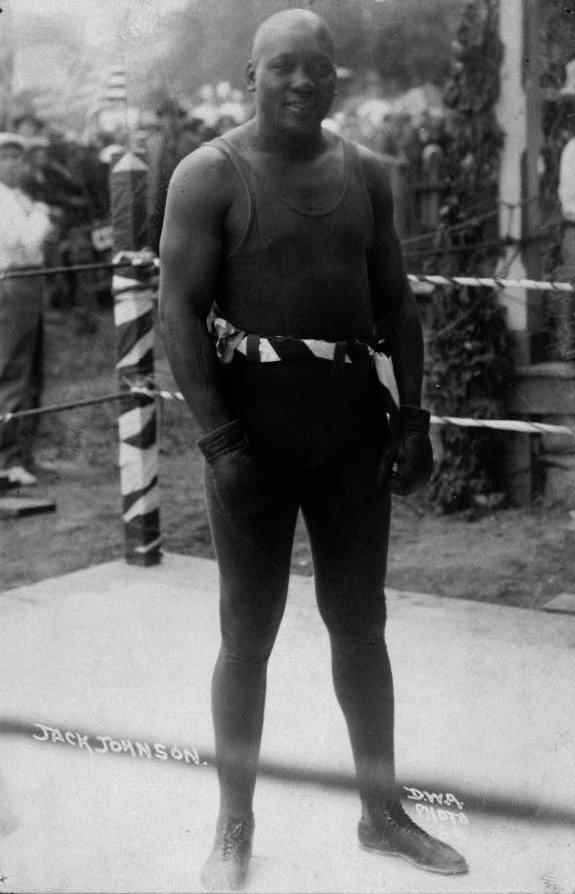
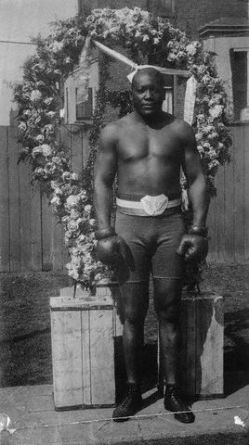
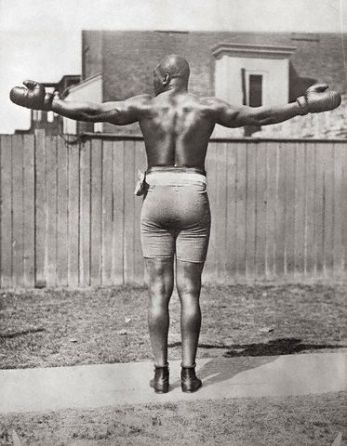
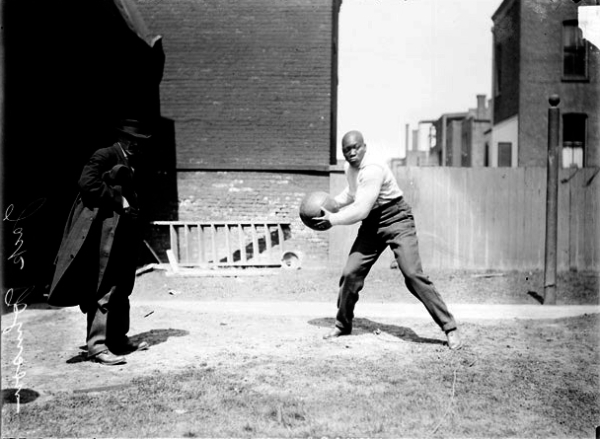
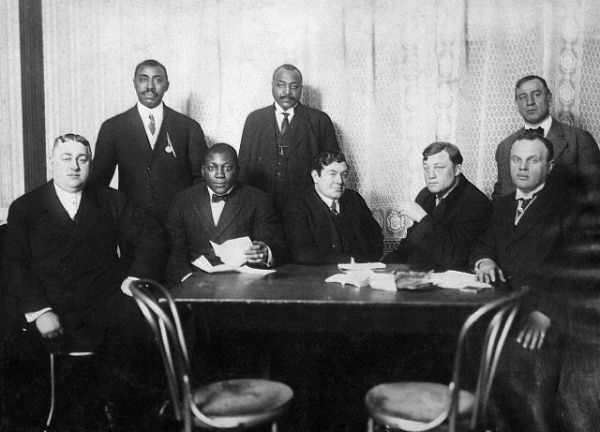
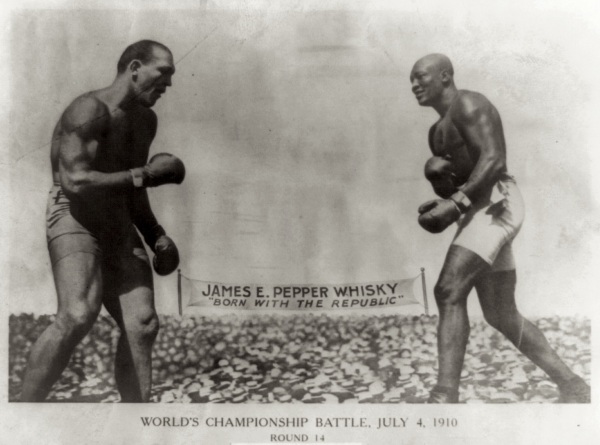





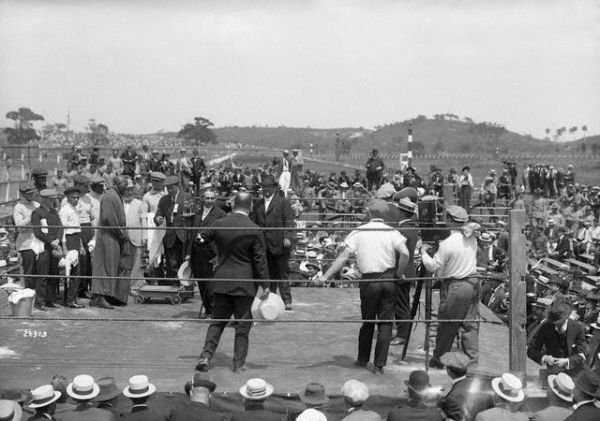

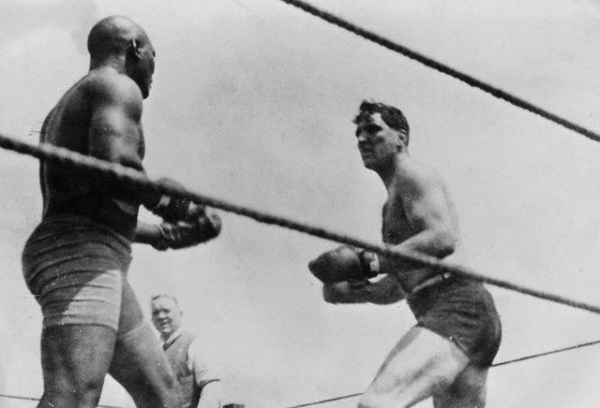

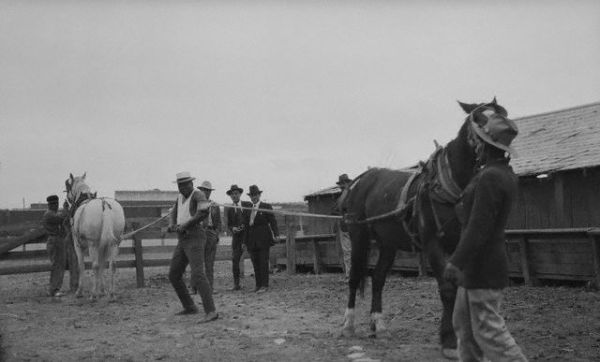

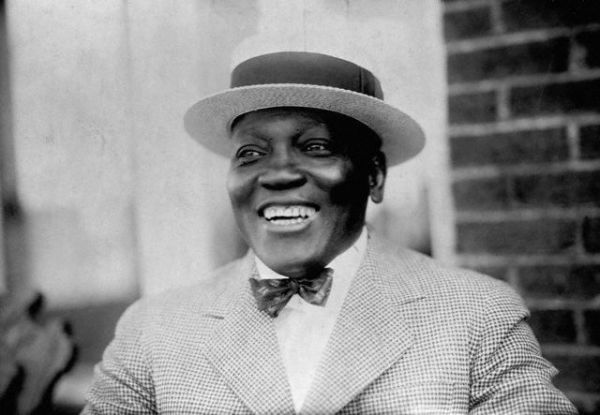
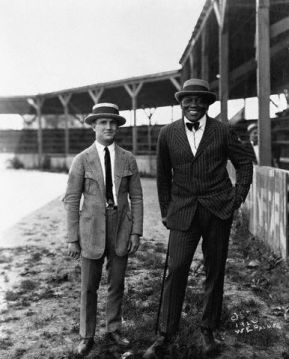

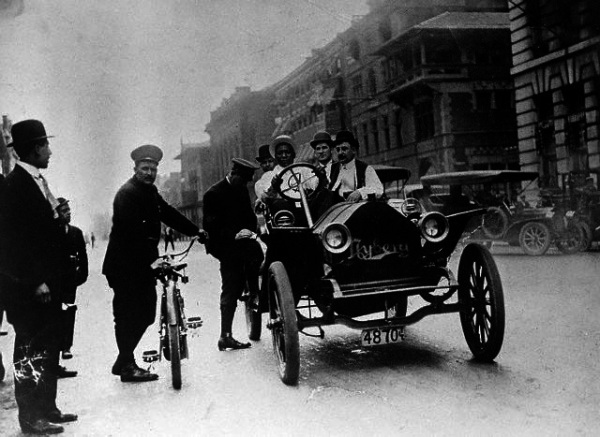


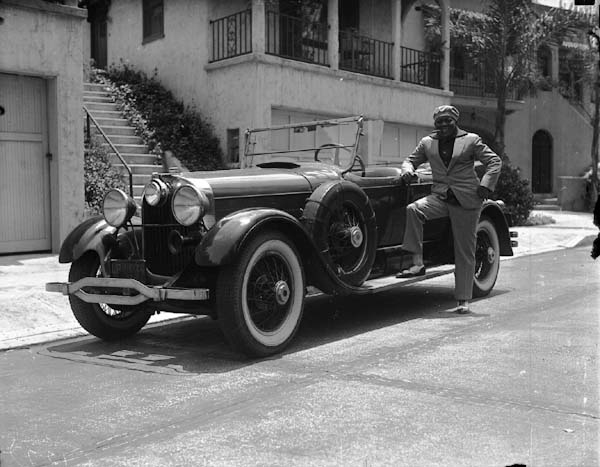


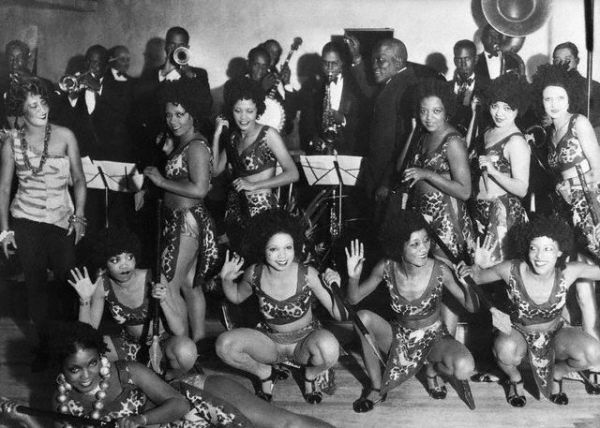


Great job! Really enjoyed this.
ReplyDeletereally proud of the African American man that made names for themselves after so many years a brutally slavery. hats off to you Jack Johnson.
ReplyDeletereally proud of the African American man that made names for themselves after so many years a brutally slavery. hats off to you Jack Johnson.
ReplyDeletereally proud of the African American man that made names for themselves after so many years a brutally slavery. hats off to you Jack Johnson.
ReplyDeleteHats off to yo Jackson Johnson ! 🎩 🎩
ReplyDeleteHats off to yo Jackson Johnson ! 🎩 🎩
ReplyDeleteHats off to yo Jackson Johnson ! 🎩 🎩
ReplyDelete